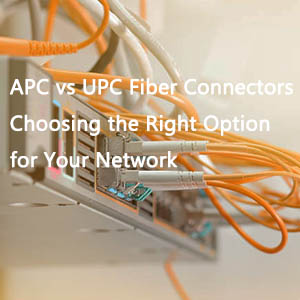Fiber optic technology is renowned for its precision, with each component being critical for ensuring flawless data transmission. Connectors, Attenuators, and Adapters are particularly essential for tailoring and enhancing fiber optic networks. This article delves into the four main types—Fiber Adapters, Fiber Attenuators, Fiber Connectors, and Field Assembly Connectors—highlighting their distinctive features, functions, and ideal use cases.

Fiber Adapters: Seamless Integration Of Connections
Fiber adapters are fundamental devices that facilitate smooth connections between various fiber optic cables.
- Key Features:
- Exceptional durability and precise alignment.
- Offered in an array of connector types, including LC, SC, FC, and MPO.
- Compatible with both single-mode and multimode fibers.
- Applications:
- Fiber adapters are prevalent in telecommunications, data centers, and testing environments, providing a reliable interface for extending connections or switching between cable types.
Fiber Attenuators: Managing Optical Signal Power
Fiber attenuators are engineered to diminish the strength of optical signals, preventing signal overload and distortion.
- Key Features:
- Options for fixed or variable attenuation.
- Compact design for convenient integration.
- Suitable for both single-mode and multimode fibers.
- Applications:
- Fiber attenuators are perfect for long-haul networks, high-power transmission setups, and calibration in testing environments where precise signal strength control is crucial.
Fiber Connectors: The Nexus of Cable Links
Fiber connectors are the endpoints of fiber optic cables, ensuring accurate alignment for signal transmission.
- Key Features:
- Superior performance in insertion and return loss.
- Available in simplex, duplex, and MPO/MTP configurations.
- Plug-and-play design for rapid deployment.
- Applications:
- Fiber connectors are vital in LAN/WAN deployments, FTTH networks, and data centers, offering stable and efficient connections.
Field Assembly Connectors: Expedient Field Solutions
Field assembly connectors (also known as quick connectors) provide a convenient method to terminate fiber optic cables in the field without specialized equipment.
- Key Features:
- Installation in under a minute.
- Compatible with LC, SC, and FC connector types.
- Reusable and dependable for both temporary and permanent configurations.
- Applications:
- These connectors excel in emergency repairs, temporary setups, and bespoke installations where speed and adaptability are key.
Choosing the Appropriate Component
The selection of the appropriate component hinges on the specific requirements of your network:
- For extending cable lengths or transitioning between connectors, fiber adapters are the preferred choice.
- Networks involving high-power lasers or long-distance transmissions necessitate fiber attenuators.
- High-performance networks depend on high-quality fiber connectors to preserve signal integrity.
- Field assembly connectors are invaluable for on-site installations or repairs due to their user-friendly nature.
Conclusion
Every component within the Connectors, Attenuators, and Adapters family is integral to constructing and maintaining robust fiber optic networks. By grasping their unique attributes and applications, users can make informed decisions that cater to their unique needs. Whether managing a vast data center or setting up a temporary fiber link, having the right tools ensures smooth and efficient operations. Investigate these indispensable components and enhance your network today!










